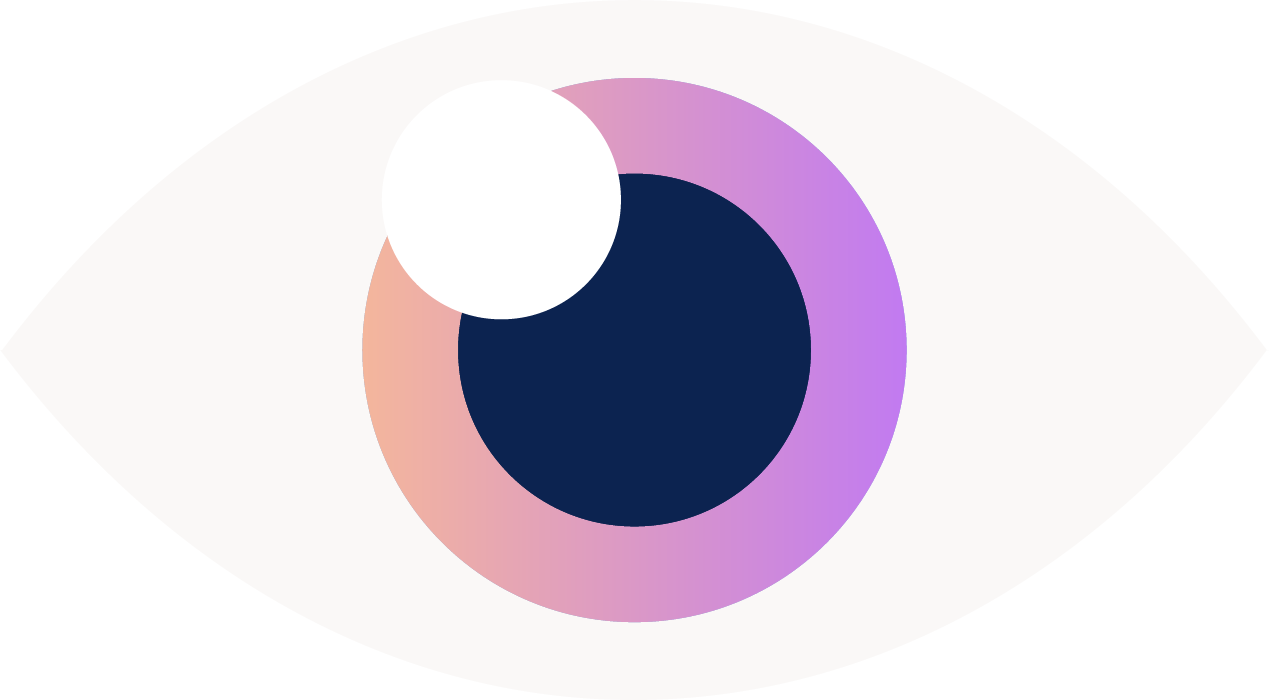Styes!
I see a lot of styes in my practice as a pediatric ophthalmologist. Adults and kids get them and they can be slightly painful, tender and look terrible. Most patients are concerned that styes are an infection (which they are not) and want quick treatment for them. Usually our adult patients come in for an appointment, having researched online (I admit it, I consult Dr. Google as well), and want the stye cut out. Sometimes, that's not am immediate option.A stye is a term that people use to describe two different medical conditions interchangeably. Sometimes, people are referring to a hordeolum. And, sometimes, they mean a chalazion. What's the difference? And, what is a stye anyway? A chalazion is simply a blocked meibomian gland. The meibomian glands are these tiny glands that secrete oil for your tears. The oil is necessary for the proper composition of tears in your eyes and prevents your natural tears from evaporating too quickly. You have about 40-50 meibomian glands along the upper and lower lids, right on the inside aspect of the lid, located next to the lashes.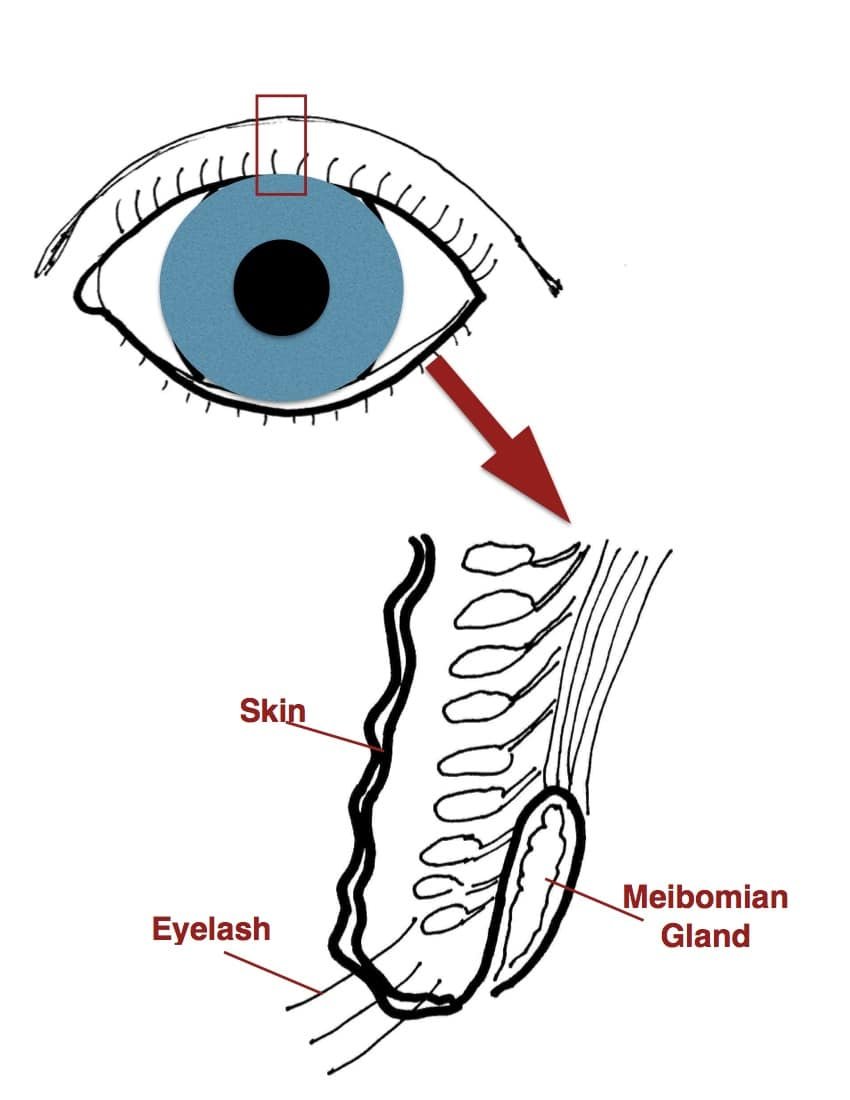 (Side note: you may have noticed that I have black and white diagrams for most of images now. That's because I hand draw all of the pictures for the blog so that I am sure I am not mistakenly using any copyrighted images. So, please do not reproduce these images without my consent)When the meibomian glands are blocked as in the picture below, people get symptoms of dryness, redness, inflammation, foreign body sensation, burning, itching and stinging. You can see the oil squeezing out of the glands while the examiner is compressing the eyelid. I'm going to warn you the next 2 pictures are a little graphic, you might not want to view these if you are eating right now.The easiest way to unblock these oil glands is by performing hot compresses for 5 minutes twice a day.
(Side note: you may have noticed that I have black and white diagrams for most of images now. That's because I hand draw all of the pictures for the blog so that I am sure I am not mistakenly using any copyrighted images. So, please do not reproduce these images without my consent)When the meibomian glands are blocked as in the picture below, people get symptoms of dryness, redness, inflammation, foreign body sensation, burning, itching and stinging. You can see the oil squeezing out of the glands while the examiner is compressing the eyelid. I'm going to warn you the next 2 pictures are a little graphic, you might not want to view these if you are eating right now.The easiest way to unblock these oil glands is by performing hot compresses for 5 minutes twice a day.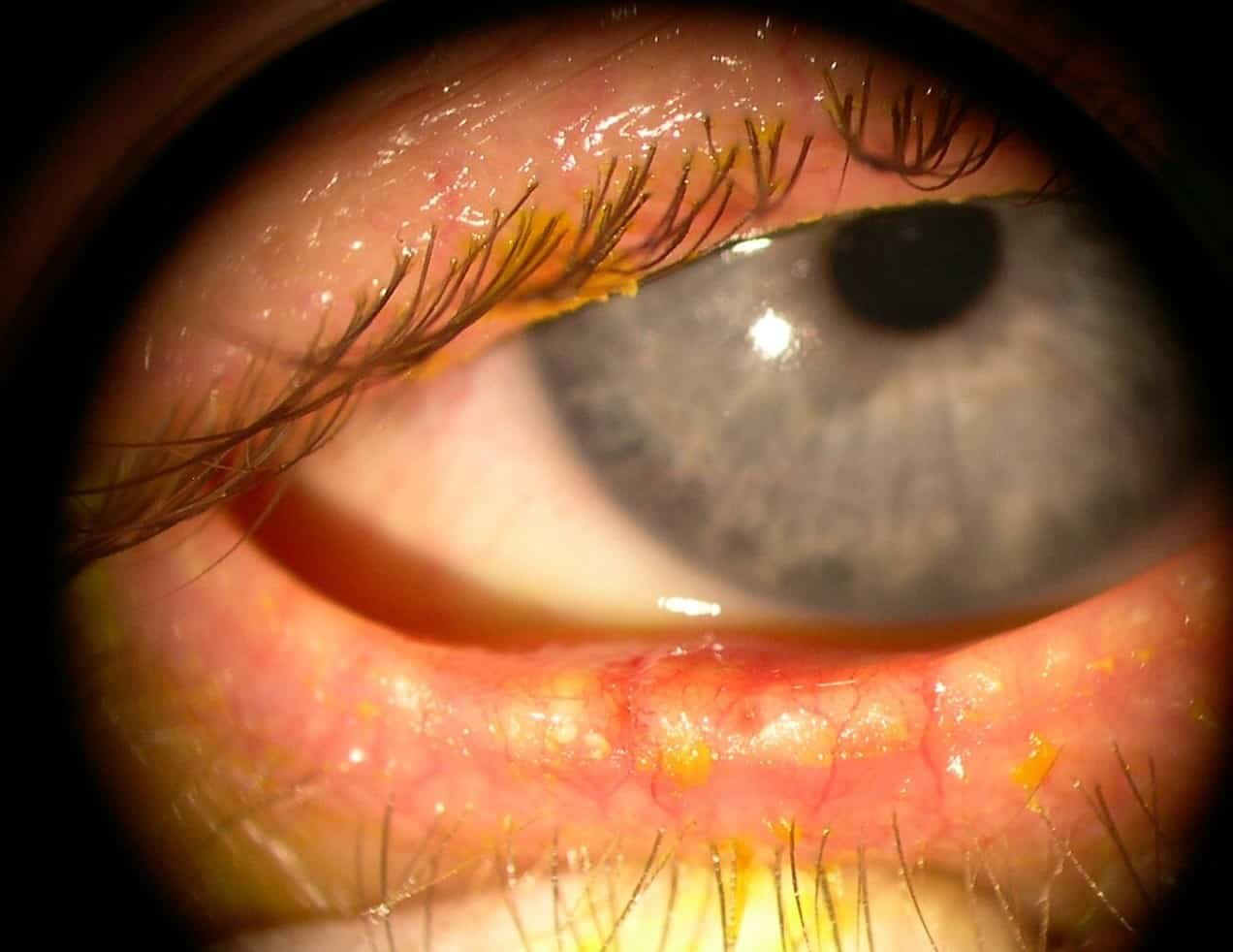
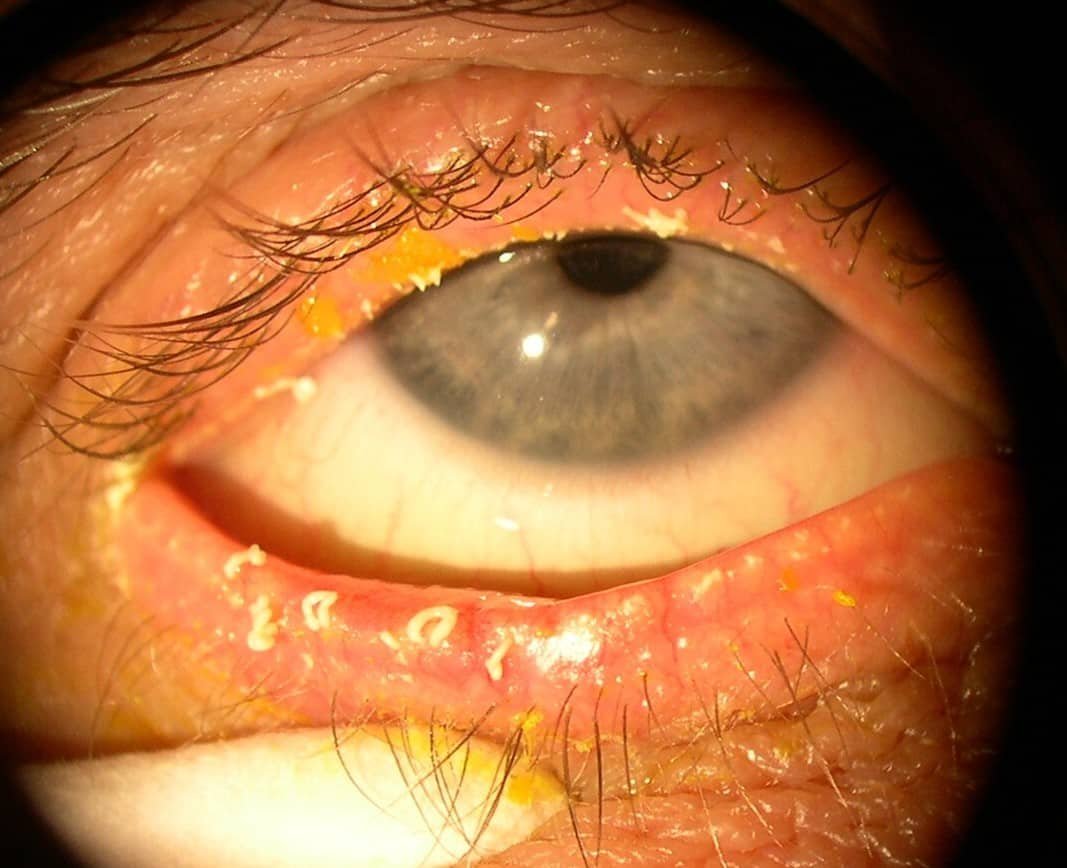
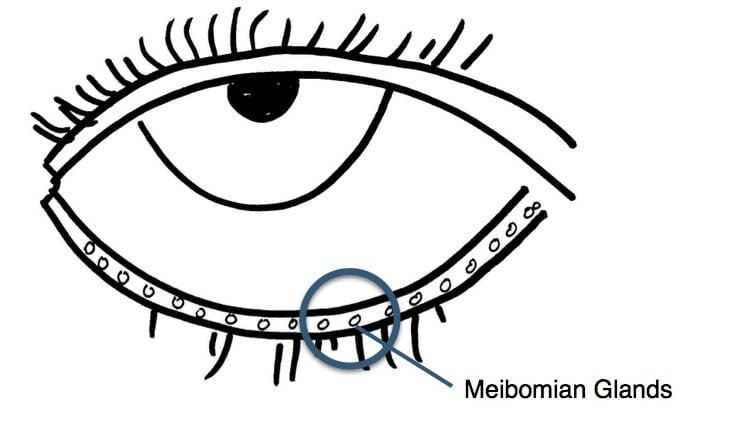 When a gland gets really obstructed and acutely inflamed, then it is a hordeolum. It's red, tender and slightly painful. Again, it's not an infection, but think of it almost like a pimple. When the lid is still hot and red appearing like this, surgical excision should not be performed. That's because you can get scarring if it's operated upon when the eye is inflamed. Here this little boy who I saw a few months ago with a really large hordeolum on the left upper lid.
When a gland gets really obstructed and acutely inflamed, then it is a hordeolum. It's red, tender and slightly painful. Again, it's not an infection, but think of it almost like a pimple. When the lid is still hot and red appearing like this, surgical excision should not be performed. That's because you can get scarring if it's operated upon when the eye is inflamed. Here this little boy who I saw a few months ago with a really large hordeolum on the left upper lid.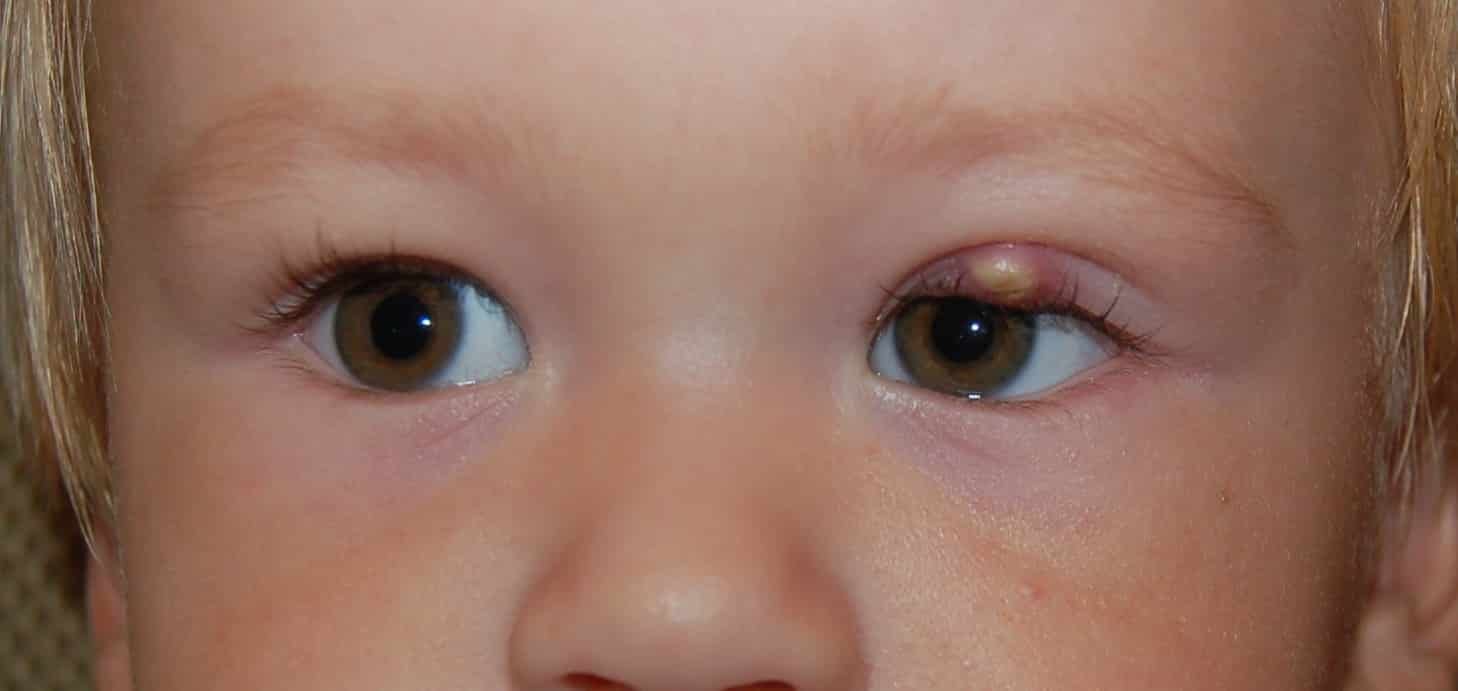 Treatment for this includes hot compresses for 15 minutes three times a day. Some kids (and adults) dislike doing hot compresses with hot water because of the wetness and the fact that it doesn't stay hot for the full 15 minutes and must be continuously rewet. So, often I will recommend preparing the hot compress by using a clean athletic sock and filling it with one cup of uncooked rice. You can also add flax seed which takes longer to heat than rice, but is also smoother and stays warmer longer. Don't pack it in tightly; leave some room for the grains to move around so that it will more easily conform to the area to be treated. Use a thick athletic sock so that the grain will not poke through the sock. Use a rubber band to close the top or if you are using a tube sock, you can knot it. Place it in the microwave for 30-60 seconds. Check the temperature on the back of your hand before placing it on your eye. It should be warm, but not uncomfortably hot. Place it on your closed eye for 15 minutes three times a day.I have about 3 of these socks lying around - I use them whenever I feel the earliest start of a stye forming.
Treatment for this includes hot compresses for 15 minutes three times a day. Some kids (and adults) dislike doing hot compresses with hot water because of the wetness and the fact that it doesn't stay hot for the full 15 minutes and must be continuously rewet. So, often I will recommend preparing the hot compress by using a clean athletic sock and filling it with one cup of uncooked rice. You can also add flax seed which takes longer to heat than rice, but is also smoother and stays warmer longer. Don't pack it in tightly; leave some room for the grains to move around so that it will more easily conform to the area to be treated. Use a thick athletic sock so that the grain will not poke through the sock. Use a rubber band to close the top or if you are using a tube sock, you can knot it. Place it in the microwave for 30-60 seconds. Check the temperature on the back of your hand before placing it on your eye. It should be warm, but not uncomfortably hot. Place it on your closed eye for 15 minutes three times a day.I have about 3 of these socks lying around - I use them whenever I feel the earliest start of a stye forming.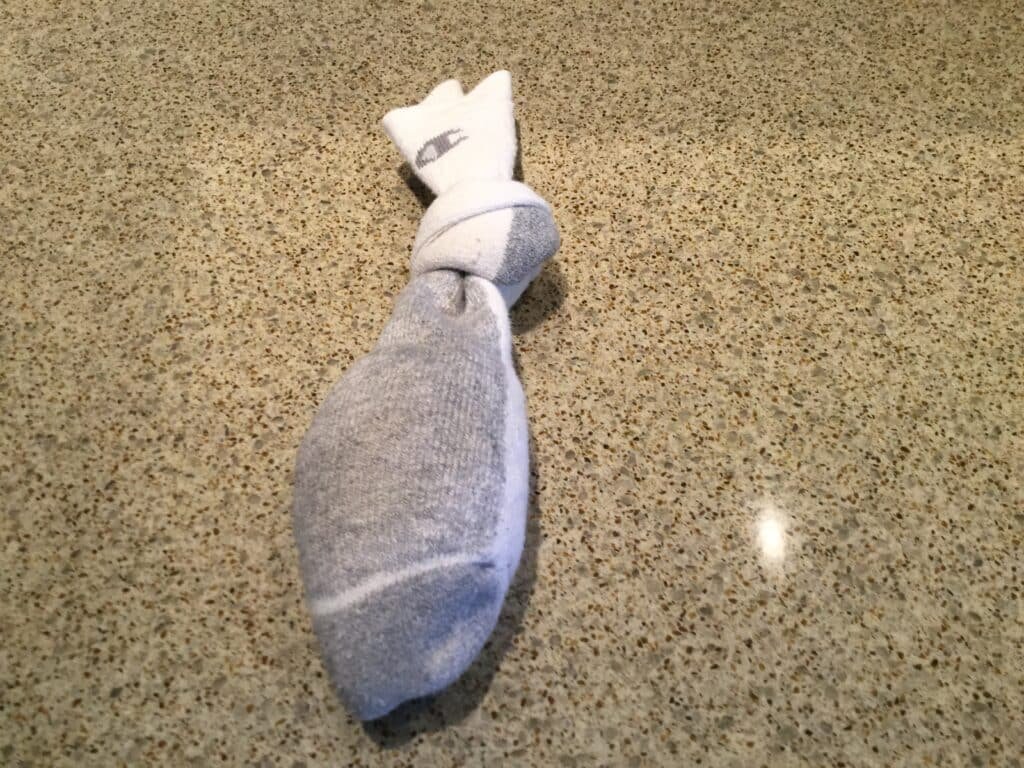 If started early enough, hot compresses will be sufficient to resolve the hordeolum by opening up the oil gland. Below is a picture of the head of the hordeolum. Note the beefy red bump on the inner aspect of the lower lid. The goal is for this to drain with the hot compresses.
If started early enough, hot compresses will be sufficient to resolve the hordeolum by opening up the oil gland. Below is a picture of the head of the hordeolum. Note the beefy red bump on the inner aspect of the lower lid. The goal is for this to drain with the hot compresses.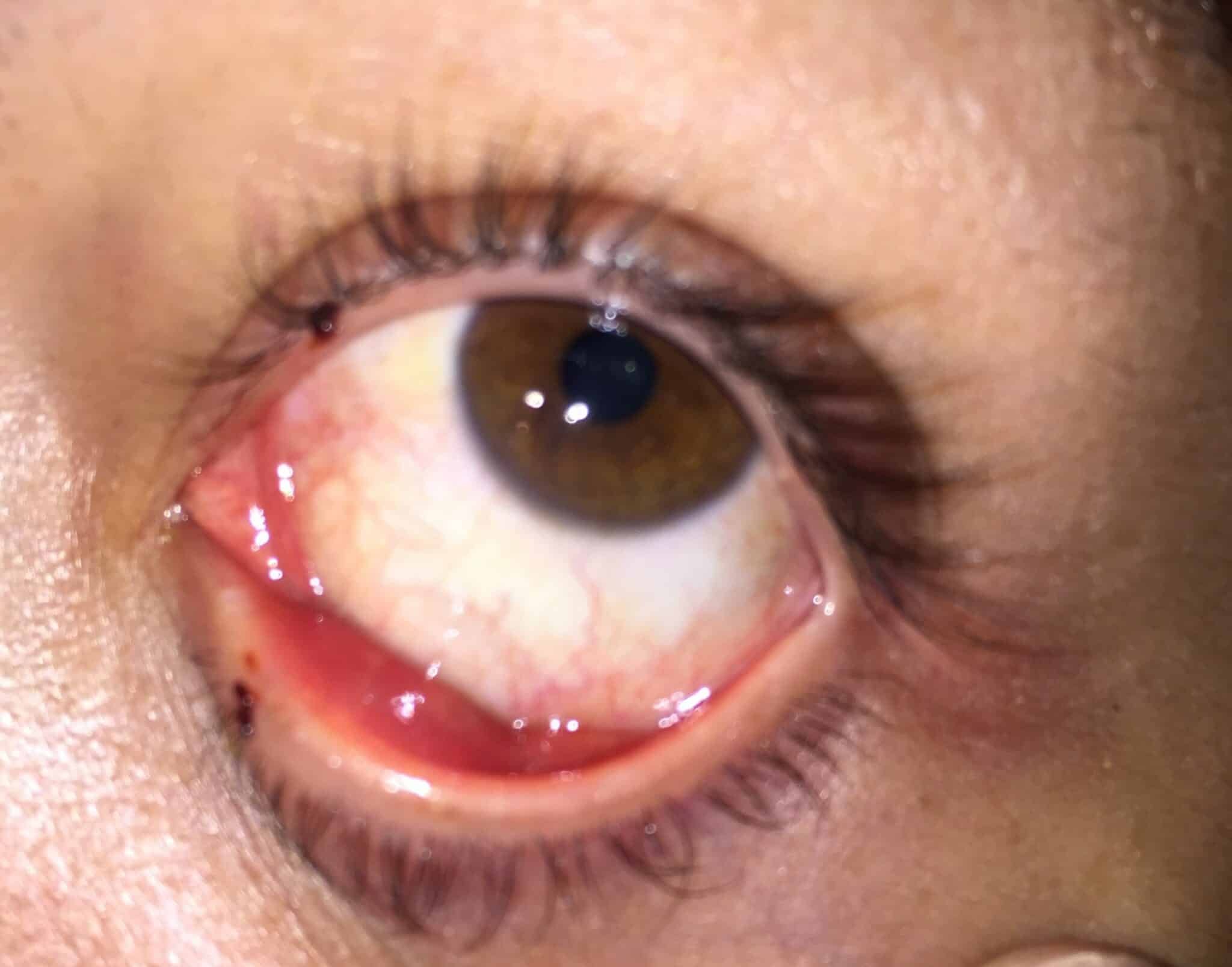 Sometimes, a combination antibiotic/steroid drop (Tobradex, Maxitrol, Nepolydex) will be started at the same time as the hot compresses. The steroid helps decrease the amount of inflammation surrounding the blocked oil gland. The antibiotic helps to combat the bacterial infection of the oil gland. If these treatments are not sufficient, then the hordeoleum can sometimes progress into a chalazion. A chalazion is a granuloma - basically when the body has begun to wall off the infection. Therefore, drops are not as effective in treating chalazion. Often times, I will recommend omega three supplements or flaxseed oil for multiple chalazion. And, there has also been some data that reducing milk in your diet may help decrease the incidence of chalazion as well.
Sometimes, a combination antibiotic/steroid drop (Tobradex, Maxitrol, Nepolydex) will be started at the same time as the hot compresses. The steroid helps decrease the amount of inflammation surrounding the blocked oil gland. The antibiotic helps to combat the bacterial infection of the oil gland. If these treatments are not sufficient, then the hordeoleum can sometimes progress into a chalazion. A chalazion is a granuloma - basically when the body has begun to wall off the infection. Therefore, drops are not as effective in treating chalazion. Often times, I will recommend omega three supplements or flaxseed oil for multiple chalazion. And, there has also been some data that reducing milk in your diet may help decrease the incidence of chalazion as well.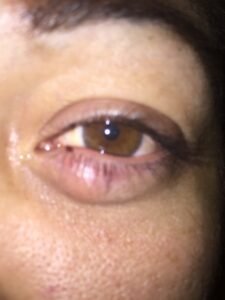 If none of these modalities are effective, then the only treatment left is surgery. Basically, the chalazion is incised and drained after injecting local anesthetic along the eyelid for pain. The clamp (pictured below) is used to evert the eyelid to gain better access to the chalazion.
If none of these modalities are effective, then the only treatment left is surgery. Basically, the chalazion is incised and drained after injecting local anesthetic along the eyelid for pain. The clamp (pictured below) is used to evert the eyelid to gain better access to the chalazion.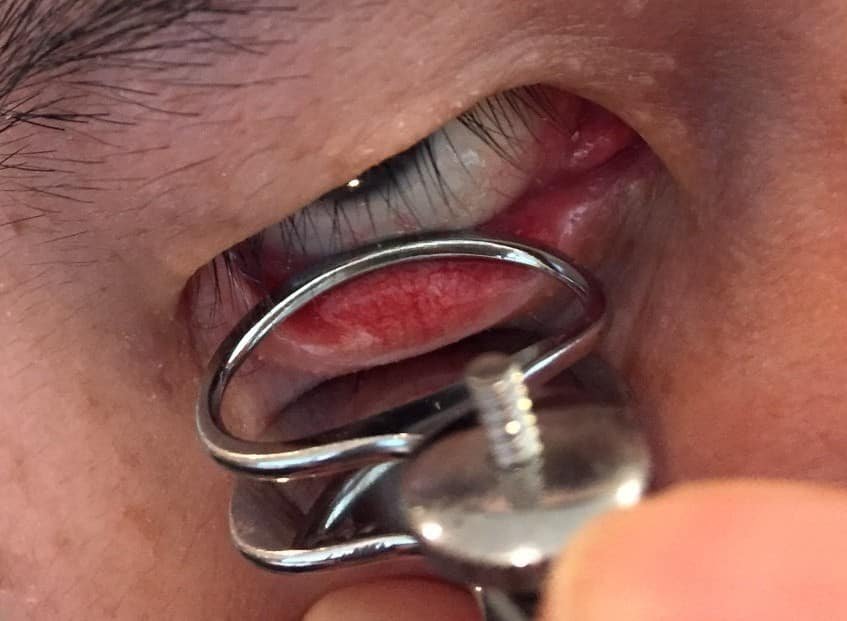 For adults, this can be an in an office procedure. For kids, I always do this in the operating room under general anesthesia. Oral antibiotics are not necessary after the procedure, I only prescribe antibiotic ointment post-operatively. Usually sutures are also not necessary, since typically the incision is made on the underside of the skin. If a skin incision needs to be made, then sutures will probably be placed.There you have it - styes and what to do to hopefully prevent them from requiring surgery.
For adults, this can be an in an office procedure. For kids, I always do this in the operating room under general anesthesia. Oral antibiotics are not necessary after the procedure, I only prescribe antibiotic ointment post-operatively. Usually sutures are also not necessary, since typically the incision is made on the underside of the skin. If a skin incision needs to be made, then sutures will probably be placed.There you have it - styes and what to do to hopefully prevent them from requiring surgery.
